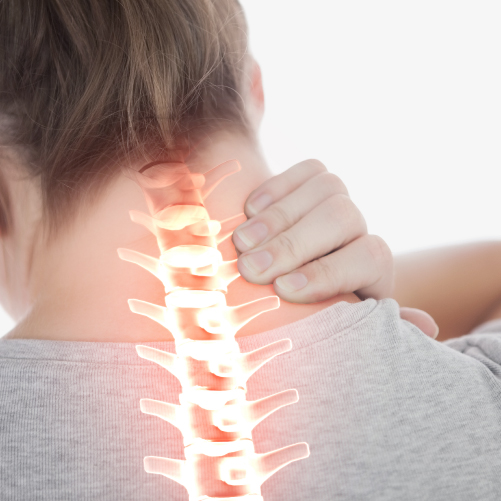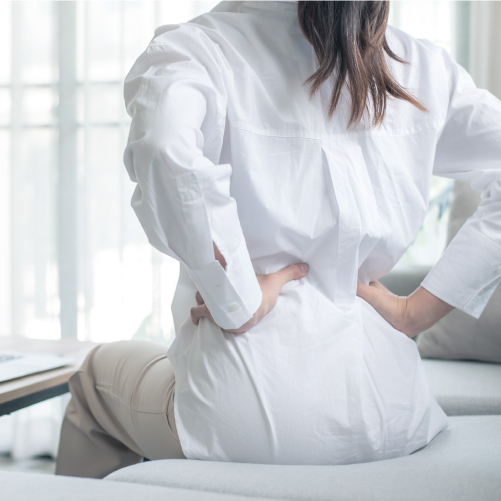Education

Runner's knee, or patellofemoral pain syndrome (PFPS), is common among those with repetitive knee movements. It can be caused by factors like muscle imbalances, biomechanical issues, or overuse. To better manage this condition, let's address 5 common myths about runner's knee.
Myth 1: Runner's Knee Is Just for Runners?
Despite the name, anyone with repetitive knee movements, like walking, cycling, jumping or daily activities, can develop runner's knee. It's not limited to runners, although they are at higher risk due to knee stress.
Many people have experienced ankle inversion injury, commonly known as ankle sprain, which can lead to medial and lateral ligament sprain. Some people believe that ankle sprains are minor injuries that can heal on their own without the need for medical consultation. However, some people may still experience stiffness and pain in the ankle for a long time after the injury while others feel that their ankle is loose and at risk of spraining again. Many people think that once they have sprained their ankle, they are more prone to recurrent sprains. So, are these common perceptions accurate? Let's find out the correct answers from a professional perspective.
Firstly, let's understand the tissue healing process after an ankle sprain. After the sprain, the tissue goes through four stages: bleeding, inflammation, proliferation, and remodeling. Following an ankle sprain, there is bleeding and inflammation in the tissues. Then, the fibrous tissue undergoes proliferation. However, during this stage, the newly formed tissue is disorganized and forms "scar adhesions". Although the tissue arrangement is irregular during this stage, it generally reshapes during the final remodeling phase, gradually restoring the injured ankle to normal. Generally speaking, mild ankle sprains heal on their own.
Back pain is usually associated with the discs, facet joints, nerves, fibres and ligaments of the spine. Muscular pain and spasms are often secondary symptoms. Traditional “passive” therapies such as heat, electrotherapy and massage only offer short-term help, as they do not deal with the primary cause of the pain. If the problem is only muscular then the pain will normally subside within a matter of days.
Discs act as shock absorbers but aging causes them to dry out. Cracks appear and they start to absorb force unevenly, causing bulging and prolapse. It is the resulting pressure on surrounding tissues that causes pain. When there is pressure on the nerves, pain can be felt all the way down to the feet.
Despite its commonplace occurrence, there are many myths or misconceptions surrounding common back pain. Here are three examples:
- There is no such thing as a “slipped disc”. This commonly used term is simply incorrect. The disc may crack or bulge. This is itself can cause pain. If the crack is severe, the internal core material may be squeezed out and this is then called a prolapsed disc. Yet discs do not slip in and out of place like slippery bars of soap. Be wary of modes of treatment which claim to be able to pop your disc back in place.
- In most cases, X-rays offer no valuable information regarding common back pain. Normally, degenerative changes in our spine start occurring in our 20s’, and 95% of people by age 50 show degenerative changes on X-rays. It is incorrect to assume that in all cases, these incidental X-ray changes are causing our back pain. Magnetic Resonance Imaging (MRI) has been overused in attempting to diagnosis common back pain. One research study revealed that only 36% of 98 normal volunteers had completely normal MRI! It is a sophisticated technology which should be used before surgery and to diagnosis non-mechanical back pain.
In most cases, pain in the back and neck occurs not as the result of one specific, isolated incident but as a result of prolonged, sustained and repetitive strain or “loading” on certain parts of the spine. If you can relate the onset of pain to one incident, the latter was probably the proverbial “last straw”. The process started long before that.
To understand this concept of loading, just stick out your left thumb and slowly to pull it back over you left wrist with your other hand. Pull it back until you feel discomfort at the base of the thumb. We are now “loading” this joint. We can increase the loading at this joint and sooner or later cause pain. Another way we can cause pain is to apply only mild pressure but don’t let go for a long time.
The most common type of back pain originates from the discs. This kind of pain (Let’s call it Type I) is felt most prominently in the low back and buttocks.
It is aggravated by bending forward, especially if you have to remain in that position or repeat it many times at work or play. If you have Type I Back Pain, you will feel worse with bending over to brush your teeth, put on your socks, cut your toe nails, or retrieving a golf ball from the cup. You will also feel worse after sitting for prolonged periods of time, such as long car rides or engaging in desk work all day. Doing knee-to-chest exercises, sit-ups, and working out at the rowing machines will also aggravate this pain. The pain can usually be reduced by straightening up, bending backward, walking around and lying down, especially if you lie prone.






